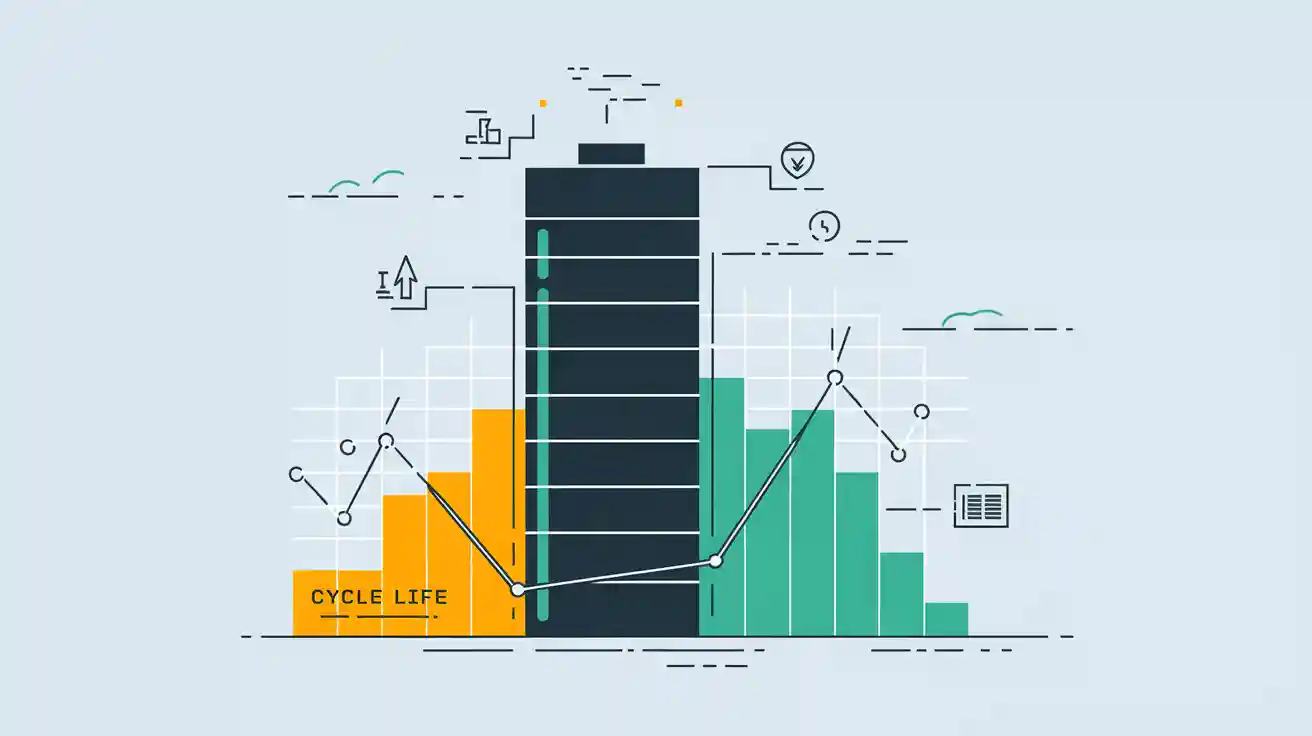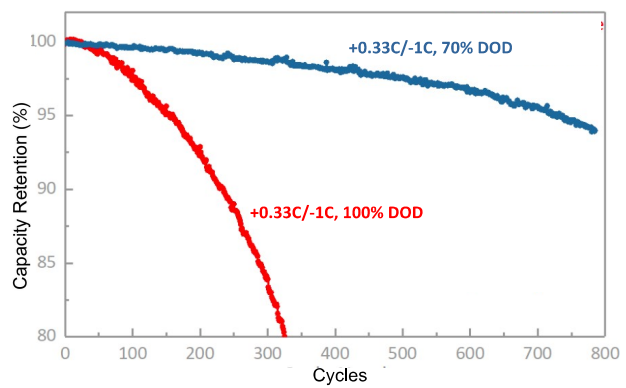
One-Sentence Definition
Cycle life is the number of complete charge and discharge cycles a battery can undergo before its capacity drops below a specified threshold—typically 80% of its original value—according to international standards such as IEC 61427.[source]
Detailed Explanation
Cycle life is a critical metric for evaluating battery durability and long-term value. Each cycle consists of a full discharge followed by a full recharge. Over time, chemical and mechanical changes inside the battery—such as electrode material fatigue and electrolyte decomposition—cause gradual capacity loss. When a battery’s usable capacity falls below 80% of its rated value, it is generally considered to have reached the end of its cycle life, as defined by standards like IEC 61427 and widely adopted in the industry.[source][source]
Key Components and Influencing Factors
-
Depth of Discharge (DoD): The deeper a battery is discharged in each cycle, the fewer cycles it will last. For example, a battery cycled at 100% DoD may last 300 cycles, while at 70% DoD it could exceed 800 cycles. See the DoD vs. Cycle Life chart below:

-
Temperature: High or low operating temperatures accelerate battery degradation and reduce cycle life.
-
Charge/Discharge Rate (C-rate): Fast charging or discharging increases internal stress and shortens cycle life.
-
Battery Chemistry and Materials: Different chemistries (e.g., lithium-ion, LiFePO4, lead-acid) have inherently different cycle lives.
-
State of Charge During Storage: Storing batteries at high charge or in hot environments can reduce both cycle and calendar life.
Real-World Applications
Cycle life is especially important in applications where batteries are frequently charged and discharged, such as:
- Electric vehicles (EVs)
- Smart home devices
- Industrial handheld tools
- Renewable energy storage (e.g., solar PV systems)
For example, Yungbang’s custom lithium battery solutions are engineered for high cycle life, making them ideal for smart home devices and industrial equipment that require reliable, long-term performance. In typical use, Yungbang batteries can maintain over 80% capacity after 1,000–2,000 cycles, meeting or exceeding international standards and certifications.
Related Concepts
- Depth of Discharge (DoD): The percentage of battery capacity used in each cycle. Lower DoD extends cycle life.
- Capacity Retention: The percentage of original capacity remaining after a set number of cycles.
- State of Health (SoH): A measure of overall battery condition, including cycle life and capacity retention.
- Calendar Life: The total lifespan of a battery based on time, regardless of usage. Unlike cycle life, calendar life is affected by storage conditions and age.
- Shelf Life: The duration a battery can be stored without significant degradation.
For a deeper dive into these terms, see Grepow’s guide.
Why Cycle Life Matters
Understanding cycle life helps businesses and engineers select the right battery for their application, optimize usage patterns, and estimate total cost of ownership. Batteries with higher cycle life reduce replacement frequency, lower maintenance costs, and improve sustainability.
Looking for high-cycle-life lithium battery solutions? Discover Yungbang’s certified custom battery products.

